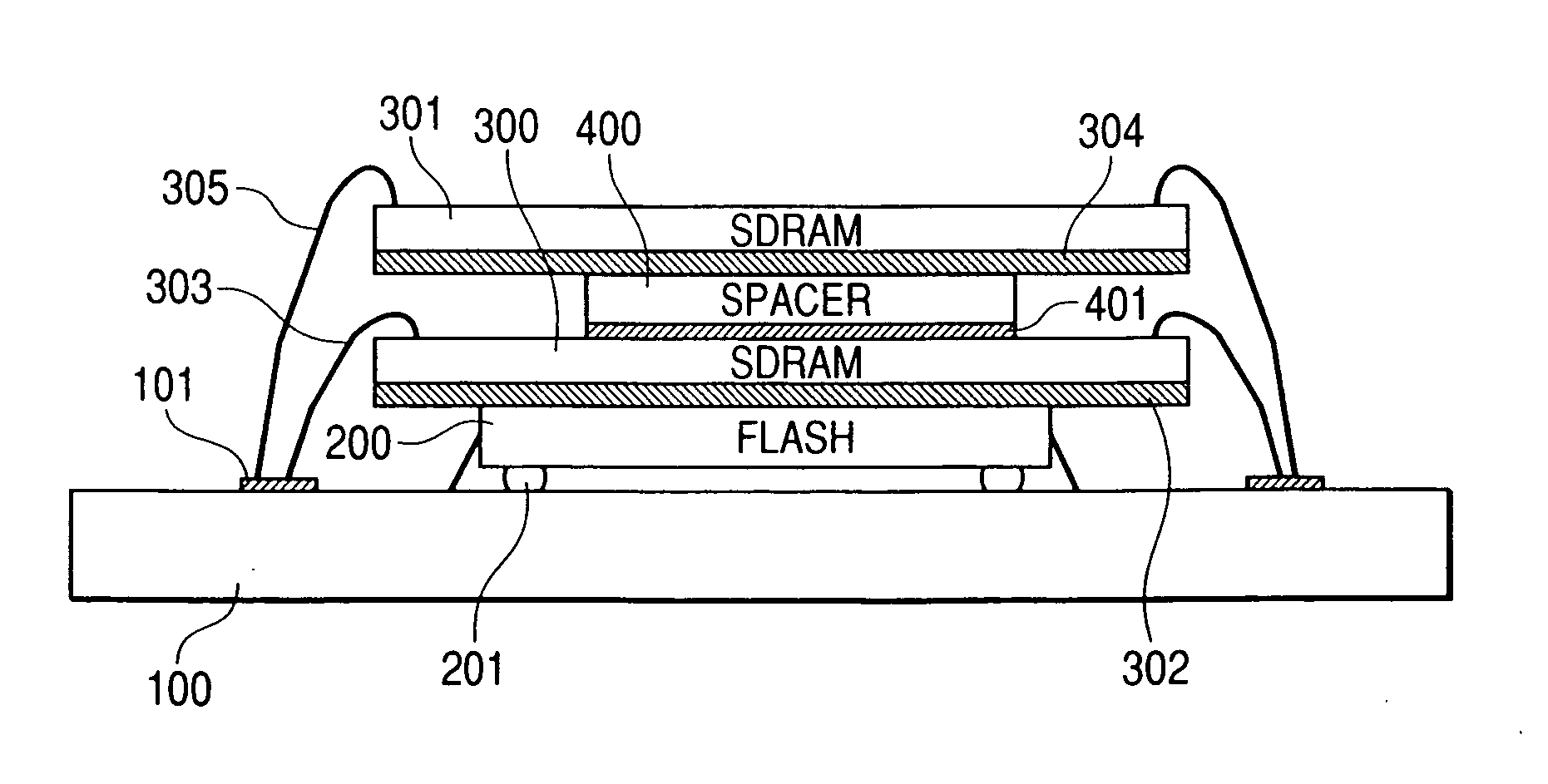Multi-chip module
a multi-chip module and chip technology, applied in the field of multi-chip modules, can solve the problems of reducing the distance between the semiconductor chip and the wiring distance, and the device becomes limited naturally, so as to achieve the effect of reducing the size and double the circuit performan
- Summary
- Abstract
- Description
- Claims
- Application Information
AI Technical Summary
Benefits of technology
Problems solved by technology
Method used
Image
Examples
Embodiment Construction
[0028]FIGS. 1 through 6 show cross sectional views of a multi-chip module in an embodiment of the present invention. In FIGS. 1 through 6, how to assemble the multi-chip module is shown as an assembly flowchart. The multi-chip module in this embodiment is configured by application specified integrated circuits, that is, a microcomputer LSI that includes a CPU composed of a specific purpose IC (hereinafter, to be referred to simply as ASIC), two synchronous dynamic random access memories (hereinafter, to be referred to simply as SDRAM respectively), and a flash EEPROM (Flash Electrically Erasable and Programmable Read Only Memory; hereinafter, to be referred to simply as FLASH) therein. Those components are stacked in the module.
[0029] Although not restricted specially, the sizes of the semiconductor chips to be stacked in the module will be as follows: the ASIC 500 is 5.75×5.75; the SDRAM 300 / 301 is 6.84×6.80; and the FLASH 200 is 8.51×5.82. The SDRAM 300 / 301 has a storage capacity...
PUM
 Login to View More
Login to View More Abstract
Description
Claims
Application Information
 Login to View More
Login to View More - R&D
- Intellectual Property
- Life Sciences
- Materials
- Tech Scout
- Unparalleled Data Quality
- Higher Quality Content
- 60% Fewer Hallucinations
Browse by: Latest US Patents, China's latest patents, Technical Efficacy Thesaurus, Application Domain, Technology Topic, Popular Technical Reports.
© 2025 PatSnap. All rights reserved.Legal|Privacy policy|Modern Slavery Act Transparency Statement|Sitemap|About US| Contact US: help@patsnap.com



